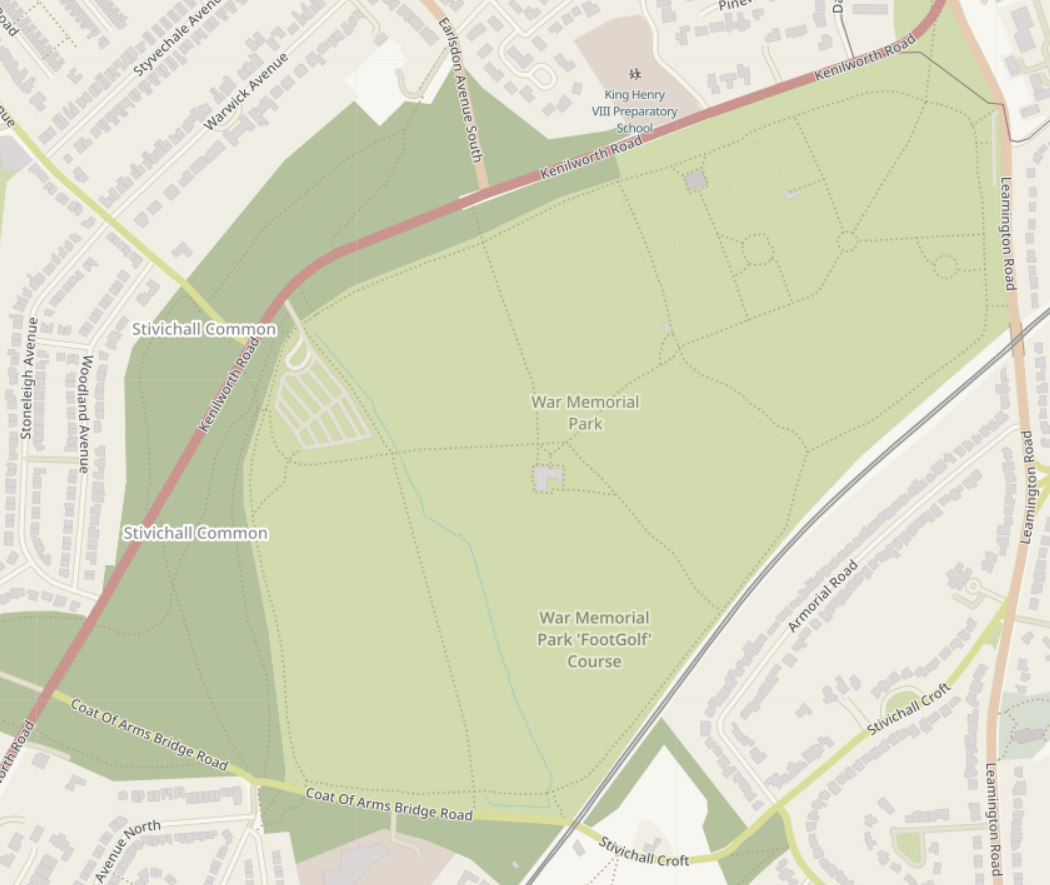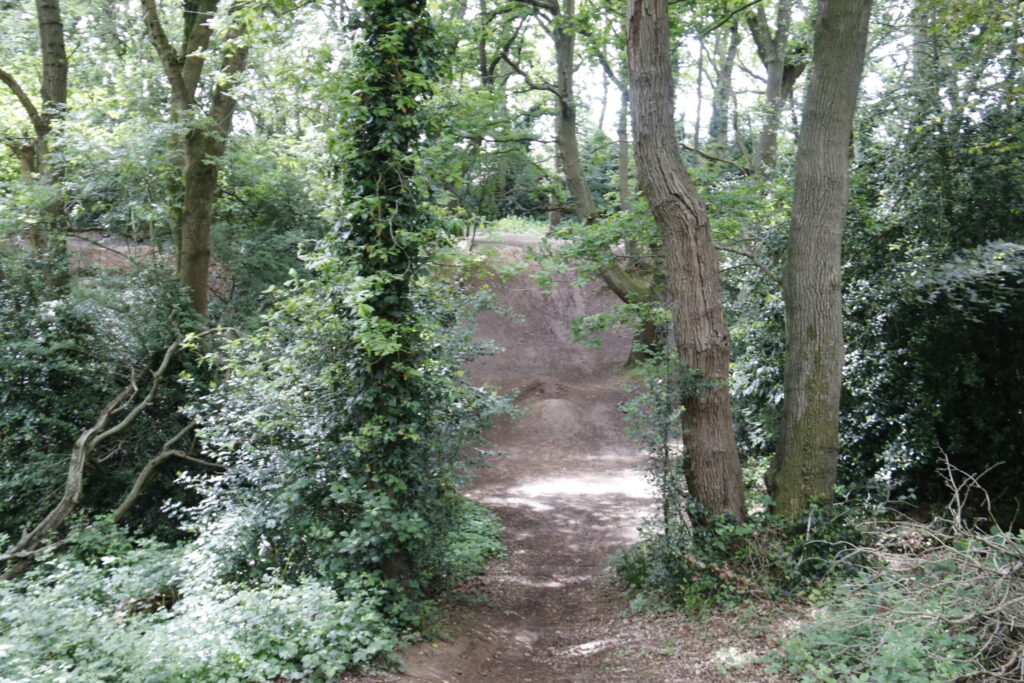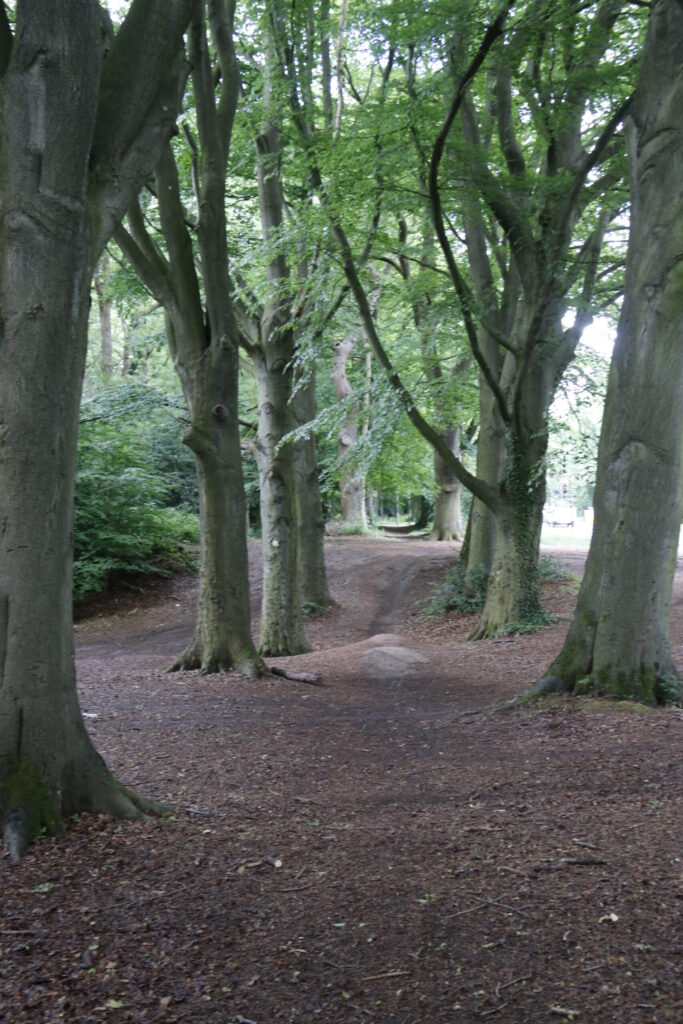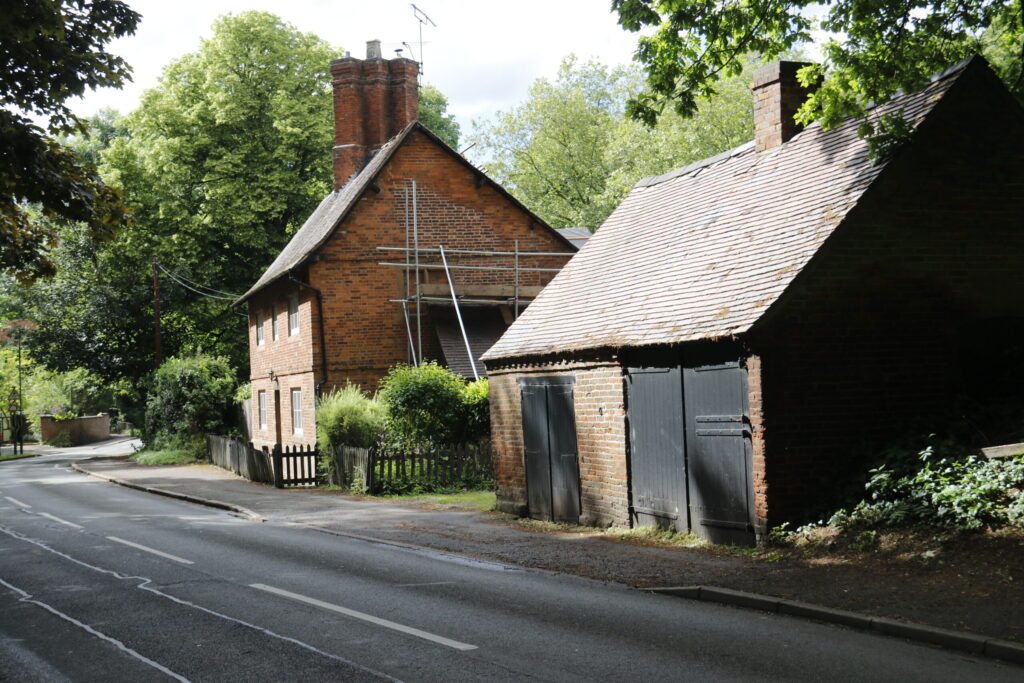
Today we start a series of Coventry Walks, created by our Chair, Peter Walters, during lockdown in 2020. Peter describes them as “a compendium of idle facts, hidden places and meaningless historiana gathered on walks within easy striding distance of the writer’s abode – and beyond.” There are twenty episoded which we will publish over the summer. Peter writes…..
Now that the holly, laurel and bramble that until recently clogged these woods has been cleared, the trees have room to breathe and the contours of the land, once small medieval clay pits and quarries close to the old road to Kenilworth, become much more evident.

Devil’s Dungeon, the deepest of these workings, was made deeper still by the men of the Royal Munster Fusiliers who while billeted in Earlsdon in early 1915 used it to try out a new trenching tool. Not much good it did them. Within weeks most of them were dead, slaughtered on the beaches of Gallipoli.
Alongside the main road, now in plain sight, is the avenue of trees planted back in the nineteenth century to give the common a parkland feel. A few are already missing and new avenues will have to be planted soon, a pressing need right along the wooded section of the Kenilworth Road. Before it was turnpiked in the 1780s, the old road ran straight through the woods, instead of taking its modern bend, and carried on over Spencer Park (and the later railway goods yard) into the city, emerging on Warwick Row.


On Coat Of Arms Bridge Road, at the entrance to Stivichall School, stands a giant London Plane tree, with jackdaws nesting in a hole in its trunk, thirty feet off the ground. Allowed to grow as it pleases, it’s so much bigger than its fellow plane trees in the capital and must be one of the largest trees in Coventry. It seems an odd thing to find on what was once a country lane.
Just before the bridge, bearing its crumbling family crest of the Gregory Hoods, is the cattle pound, a brick and stone enclosure dating from the 1660s. It’s a rare survivor and was used to pen in cattle that had wandered just a little bit too far in the days when the common lands were open to all, at least for part of the year. They would be released on pain of a fine.
In a thicket close to the pound stands a tiny cottage that looks as though it’s gradually being buried in the bushes. It’s a hidden place, only visible from a few yards away, and fifty years ago it was a favourite haunt for local children who believed a witch might live there.
Beyond the bridge, built in the 1840s to carry the Coventry to Leamington railway line, stand other remnants of the old Stivichall hamlet, two timber-framed cottages, one a former smithy. Modern Coventry seems so far away.


